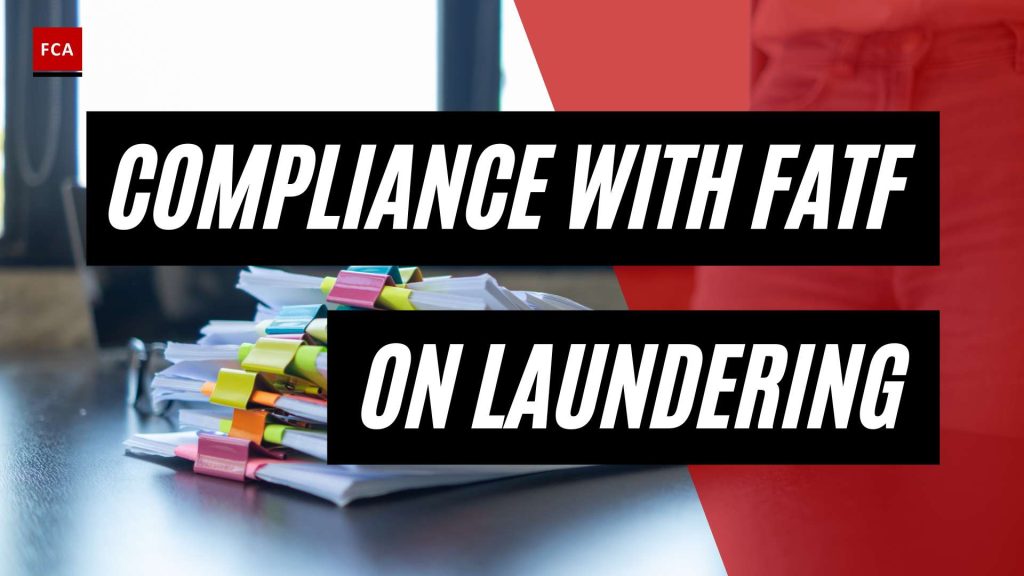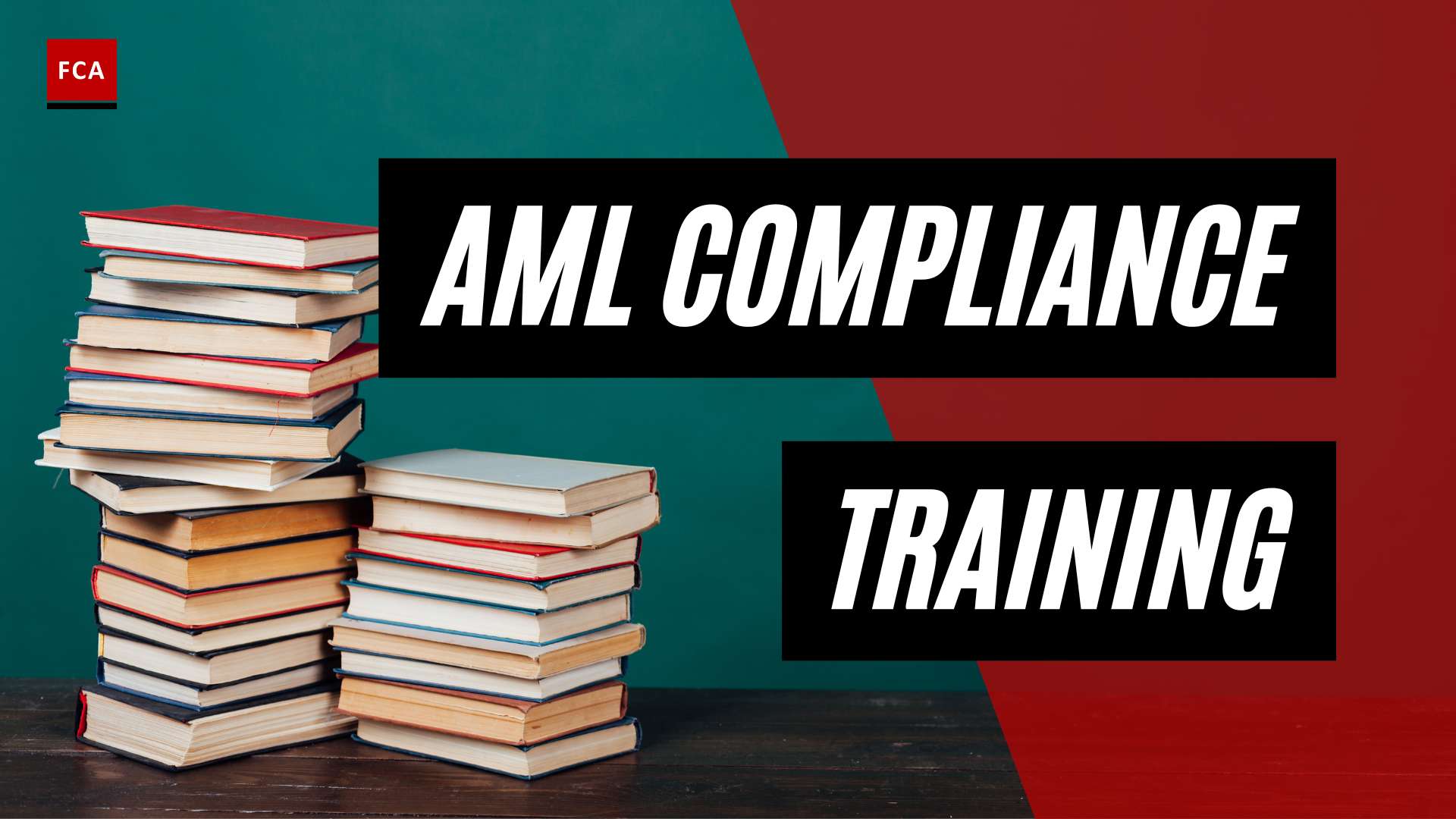FATF Recommendations Explained
To combat the global issue of money laundering, the Financial Action Task Force (FATF) has developed a set of recommendations that serve as international standards for anti-money laundering (AML) and countering the financing of terrorism (CFT). This section provides an introduction to FATF and emphasizes the importance of AML compliance.
Introduction to FATF
The FATF is an intergovernmental organization established in 1989 with the aim of setting global standards and promoting effective implementation of measures to combat money laundering, terrorist financing, and other related threats. It is recognized as the global standard-setter for AML/CFT.
FATF consists of 39 member countries and jurisdictions, along with regional organizations and observer countries. Through its recommendations, FATF provides guidance to countries and sets the expectations for their AML/CFT regimes. The recommendations are periodically reviewed and updated to address emerging risks and challenges in the financial system.
Importance of AML Compliance
AML compliance is crucial for maintaining the integrity of the financial system and preventing illicit activities, such as money laundering and terrorist financing. Adhering to the FATF recommendations is a fundamental aspect of AML compliance.
By implementing the FATF recommendations, countries establish comprehensive AML/CFT frameworks that encompass various elements, including risk assessment, customer due diligence, reporting of suspicious transactions, and the establishment of supervisory and regulatory frameworks. These measures aim to detect, deter, and disrupt illicit financial activities.
Financial institutions play a vital role in AML compliance as they are on the front lines of detecting and reporting suspicious transactions. They are expected to implement robust systems and controls to identify and mitigate money laundering risks. Failure to comply with the FATF recommendations can have severe consequences, including reputational damage, legal penalties, and regulatory sanctions.
To ensure effective AML compliance, financial institutions must stay abreast of the latest developments and updates to the FATF recommendations. This enables them to adapt their AML/CFT programs to address emerging risks, such as those associated with cryptocurrency transactions, correspondent banking, and beneficial ownership.
In the following sections, we will delve deeper into the specific FATF recommendations that are essential for AML compliance. These recommendations cover critical areas such as risk assessment, customer due diligence, and suspicious transaction reporting. Understanding and implementing these recommendations is crucial for staying ahead of the game in the fight against money laundering and terrorist financing.
Please note that membership of a country was suspended by FATF on 24 February 2023 (FATF).
Understanding Money Laundering
In order to comprehend the importance of adhering to the FATF recommendations for anti-money laundering (AML) compliance, it is essential to have a clear understanding of money laundering itself. This section will delve into the definition of money laundering and the stages involved in the process.
Definition of Money Laundering
Money laundering refers to the process by which illegally obtained funds are made to appear legitimate. It involves disguising the true origin of these funds to make them appear as if they came from legal sources. The ultimate goal of money laundering is to integrate the illicit funds into the legitimate financial system, making it difficult to trace their origin or link them to criminal activities.
Money laundering can take various forms, including the use of complex financial transactions, shell companies, offshore accounts, and other methods aimed at obscuring the illicit origins of funds. This process allows criminals to enjoy the proceeds of their illegal activities without raising suspicion or attracting the attention of law enforcement agencies. By disguising the true nature of the funds, money launderers seek to avoid detection and prosecution.
Stages of Money Laundering
Money laundering typically involves a series of stages, each designed to facilitate the integration of illicit funds into the legitimate financial system. While the specifics can vary, the general stages of money laundering are as follows:
-
Placement: This is the initial stage where the illicit funds are introduced into the financial system. It often involves the physical placement of cash into banks or other financial institutions, where it can be difficult to trace the origin of the funds.
-
Layering: In this stage, the illegally obtained funds are subjected to a series of complex transactions to further obscure their origin. This may involve transferring funds between various accounts, converting funds into different currencies, or conducting multiple transactions to create a convoluted trail that makes it challenging to trace the source of the funds.
-
Integration: The final stage of money laundering involves reintroducing the laundered funds into the legitimate economy. At this point, the funds appear to be clean and can be used for legal purposes, such as investments or purchases. The integration stage aims to make the illicit funds indistinguishable from legitimate funds, making it difficult for authorities to identify and seize them.
By understanding the definition of money laundering and the stages involved, it becomes clear why international organizations such as the Financial Action Task Force (FATF) emphasize the importance of implementing robust AML measures to combat this illicit practice. The FATF recommendations provide guidance and standards for countries to establish effective AML frameworks and ensure compliance with international standards in the fight against money laundering.
Role of FATF in Combating Money Laundering
Overview of FATF
The Financial Action Task Force (FATF) plays a crucial role in the global fight against money laundering and terrorist financing. Established in 1989, the FATF is an intergovernmental organization that sets international standards and promotes effective implementation of legal, regulatory, and operational measures to combat money laundering, terrorist financing, and other related threats.
The FATF consists of 39 member countries and jurisdictions, along with several international organizations. Its objectives include the development and promotion of policies, both at the national and international levels, to combat money laundering and terrorist financing. The FATF also conducts mutual evaluations of its members’ compliance with its recommendations to ensure the effectiveness of anti-money laundering (AML) and counter-terrorist financing (CTF) measures.
FATF Recommendations
The backbone of FATF’s efforts lies in its comprehensive set of recommendations, which provide a robust framework for countries to develop and strengthen their AML and CTF regimes. These recommendations establish a global standard for combating money laundering and terrorist financing, covering various aspects of AML and CTF measures.
The FATF recommendations cover a wide range of areas, including risk assessment and policies, customer due diligence (CDD), suspicious transaction reporting, international cooperation, and monitoring and enforcement. They provide detailed guidance to countries on the necessary steps to be taken to prevent money laundering and terrorist financing activities.
By adhering to the FATF recommendations, countries can establish a strong legal and regulatory framework, implement effective AML and CTF measures, and enhance their ability to detect, investigate, and prosecute money laundering and terrorist financing activities. The recommendations also promote international cooperation and information sharing among countries to combat these illicit activities on a global scale.
It’s worth noting that the FATF regularly reviews and updates its recommendations to stay abreast of evolving money laundering and terrorist financing threats. The most recent updates and revisions to the FATF recommendations can be found on the official FATF website.
In the next section, we will delve into the key recommendations provided by the FATF for AML compliance, which serve as essential guidelines for countries and financial institutions in their fight against money laundering and terrorist financing.
Key FATF Recommendations for AML Compliance
To effectively combat money laundering, the Financial Action Task Force (FATF) has established a comprehensive set of recommendations for anti-money laundering (AML) compliance. These recommendations provide a framework for countries and financial institutions to implement measures that mitigate the risks associated with money laundering and terrorist financing. Let’s explore three key FATF recommendations for AML compliance: risk assessment and policies, customer due diligence (CDD), and suspicious transaction reporting.
Risk Assessment and Policies
One of the fundamental pillars of AML compliance is conducting a thorough risk assessment. FATF emphasizes the importance of countries and financial institutions identifying, understanding, and assessing the money laundering and terrorist financing risks they face. This involves evaluating internal and external factors that may contribute to these risks, such as the nature of customers, products, services, and geographic locations.
Based on the risk assessment, countries and financial institutions should develop and implement robust AML policies and procedures tailored to their specific risk profile. These policies should address customer acceptance, ongoing monitoring, record-keeping, and reporting of suspicious transactions. By adopting a risk-based approach, organizations can allocate resources effectively and focus their efforts on areas of higher risk.
Customer Due Diligence (CDD)
Customer Due Diligence (CDD) is a critical component of AML compliance. FATF recommends that countries and financial institutions establish CDD measures to verify the identity of their customers and understand the nature of their business relationships. This includes obtaining and verifying customer identification information, understanding the purpose and intended nature of the business relationship, and conducting ongoing monitoring of the customer’s transactions.
Enhanced due diligence measures should be applied in higher-risk situations, such as politically exposed persons (PEPs) or customers from high-risk jurisdictions. These measures may involve obtaining additional information, conducting more frequent reviews, and obtaining senior management approval for establishing or continuing the business relationship.
Suspicious Transaction Reporting
To detect and report potential money laundering or terrorist financing activities, FATF recommends the establishment of robust suspicious transaction reporting mechanisms. Financial institutions should establish internal processes and controls to identify and report suspicious transactions to the relevant authorities. This includes training employees to recognize red flags and providing them with channels to report suspicious activities internally.
The reporting of suspicious transactions is a crucial tool in the fight against money laundering and terrorist financing. It enables law enforcement agencies to analyze and investigate suspicious activities, leading to the disruption of criminal networks and the prevention of illicit financial flows.
By adhering to these key FATF recommendations, countries and financial institutions can strengthen their AML compliance efforts and contribute to the global fight against money laundering and terrorist financing. It is important to stay updated with the latest FATF recommendations and guidance to ensure effective AML frameworks and mitigate the risks posed by illicit financial activities.
Implementing FATF Recommendations
To effectively combat money laundering and terrorist financing, it is crucial for countries to implement the FATF recommendations. Implementing these recommendations helps establish a robust anti-money laundering (AML) framework and ensures compliance with international standards. In this section, we will explore three key aspects of implementing FATF recommendations: national AML frameworks, international cooperation, and monitoring and enforcement.
National AML Frameworks
One of the fundamental aspects of implementing FATF recommendations is the establishment of comprehensive national AML frameworks. These frameworks provide a structured approach to combating money laundering and terrorist financing within a country’s jurisdiction. They include legislative measures, regulations, and guidelines that financial institutions and designated non-financial businesses and professions (DNFBPs) must adhere to.
National AML frameworks typically encompass the following elements:
-
AML Laws and Regulations: Countries need to enact legislation that criminalizes money laundering and terrorist financing, in line with the FATF recommendations. These laws define offenses, penalties, and enforcement measures.
-
AML Policies and Procedures: Financial institutions and DNFBPs must develop internal policies and procedures to identify and mitigate money laundering risks. These include customer due diligence (CDD) procedures, record-keeping requirements, and reporting suspicious transactions.
-
AML Supervision and Regulation: Countries should establish competent authorities responsible for supervising and regulating financial institutions and DNFBPs to ensure compliance with AML requirements. These authorities monitor and assess the effectiveness of AML controls, conduct inspections, and impose sanctions for non-compliance.
International Cooperation
Money laundering and terrorist financing are transnational crimes that require international cooperation to effectively combat them. The FATF recommendations emphasize the importance of countries working together to share information, coordinate efforts, and support each other in investigations and prosecutions.
International cooperation involves:
-
Mutual Legal Assistance: Countries should have mechanisms in place to provide assistance to each other in criminal investigations and proceedings. This includes sharing information, freezing and confiscating assets, and extraditing individuals.
-
Exchange of Information: Financial intelligence units (FIUs) play a crucial role in exchanging information related to suspicious transactions and money laundering activities. Countries should have mechanisms for timely and secure information sharing among FIUs.
-
International Organizations and Initiatives: Countries should actively participate in international organizations and initiatives focused on combating money laundering and terrorist financing. This includes collaboration with organizations such as the FATF, United Nations, and Interpol.
Monitoring and Enforcement
Implementing the FATF recommendations requires robust monitoring and enforcement mechanisms to ensure compliance. Countries should establish effective systems for monitoring the effectiveness of AML measures and enforcing compliance by financial institutions and DNFBPs.
Key aspects of monitoring and enforcement include:
-
Supervision and Inspections: Competent authorities should conduct regular inspections and examinations of financial institutions and DNFBPs to assess their compliance with AML requirements. These inspections help identify weaknesses, provide guidance, and take necessary enforcement actions.
-
Penalties and Sanctions: Countries should have a range of penalties and sanctions in place to deter non-compliance with AML obligations. These may include fines, revoking licenses, or imposing criminal liability on individuals or entities involved in money laundering or terrorist financing.
-
Public-Private Partnerships: Collaboration between public authorities and the private sector is essential for effective AML implementation. Public-private partnerships facilitate information sharing, capacity building, and the development of best practices to enhance AML efforts.
By implementing national AML frameworks, promoting international cooperation, and establishing robust monitoring and enforcement mechanisms, countries can effectively adhere to the FATF recommendations and strengthen their ability to combat money laundering and terrorist financing.
Consequences of Non-Compliance with FATF Recommendations
Adhering to the FATF recommendations for money laundering is of utmost importance for financial institutions and other entities involved in the global fight against money laundering. Failure to comply with these recommendations can have significant consequences, both in terms of the impact on financial institutions and the regulatory and legal consequences.
Impact on Financial Institutions
Non-compliance with FATF recommendations can have severe repercussions for financial institutions. These repercussions can include reputational damage, loss of investor confidence, and potential financial losses. Financial institutions that do not comply with AML regulations may face difficulties in maintaining correspondent banking relationships, which are crucial for conducting cross-border transactions and accessing global financial markets.
Moreover, non-compliance may result in the imposition of fines and penalties by regulatory authorities. These penalties can be substantial and may vary depending on the jurisdiction and the severity of the violations. The financial burden of these penalties, along with the costs associated with remediation efforts, can have a significant impact on the profitability and stability of financial institutions.
Regulatory and Legal Consequences
Non-compliance with FATF recommendations can also lead to regulatory and legal consequences. Regulatory authorities have the power to impose sanctions, revoke licenses, or take legal action against non-compliant financial institutions. These actions can disrupt business operations and, in extreme cases, lead to the closure of the institution.
In addition to regulatory actions, non-compliance with AML regulations can result in legal consequences. This can include criminal investigations, prosecution, and potential imprisonment of individuals involved in money laundering activities. Financial institutions may also face civil lawsuits from affected parties, such as victims of money laundering or regulatory authorities seeking restitution.
It’s important for financial institutions to understand the potential consequences of non-compliance with FATF recommendations and take proactive measures to ensure AML compliance. This includes implementing robust AML programs, conducting regular risk assessments, and establishing effective internal controls and reporting mechanisms.
By prioritizing compliance with FATF recommendations, financial institutions can mitigate the risks associated with money laundering and protect themselves from the severe consequences that arise from non-compliance. Keeping abreast of evolving AML challenges and staying updated on any updates or revisions to the FATF recommendations is crucial to maintaining a strong AML compliance framework.
Future Developments in FATF Recommendations
As the landscape of anti-money laundering (AML) continues to evolve, so do the challenges faced by financial institutions and regulatory bodies. The Financial Action Task Force (FATF) recognizes the need to adapt and update its recommendations to address emerging risks and stay ahead of money laundering practices. In this section, we will explore the future developments in FATF recommendations, focusing on the evolving AML challenges and updates to the recommendations themselves.
Evolving AML Challenges
The fight against money laundering is an ongoing battle, and new challenges constantly emerge. Technological advancements, such as the rise of cryptocurrencies and the increasing use of digital platforms for financial transactions, present new opportunities for illicit activities. Criminals are constantly finding innovative ways to exploit vulnerabilities in the global financial system.
To address these evolving challenges, FATF continuously monitors the landscape and identifies areas where its recommendations need to be updated or expanded. By staying informed about the latest AML trends and risks, the FATF can provide guidance to member countries and help them strengthen their AML frameworks.
Updates and Revisions to FATF Recommendations
FATF periodically reviews and updates its recommendations to ensure their relevance and effectiveness. These updates are based on thorough research, analysis, and consultation with member countries, industry experts, and other stakeholders. The purpose of these revisions is to keep pace with emerging money laundering techniques and enhance the global AML framework.
Updates to the FATF recommendations may include new guidelines on risk assessment methodologies, customer due diligence requirements, beneficial ownership transparency, and measures to combat terrorist financing. The revisions aim to provide clearer guidance and strengthen the ability of financial institutions and regulatory authorities to detect and prevent money laundering activities.
It’s important for organizations and professionals involved in compliance, risk management, and AML to stay updated on the latest FATF recommendations. By familiarizing themselves with the revised guidelines, they can ensure that their AML frameworks are aligned with international standards and best practices.
For more information on the FATF recommendations and their implications for financial institutions, risk assessment, beneficial ownership, and other areas, refer to our comprehensive guide on FATF recommendations for AML compliance.
In conclusion, the future developments in FATF recommendations reflect the ongoing commitment to combat money laundering and terrorist financing. By addressing evolving AML challenges and regularly updating its recommendations, FATF aims to create a robust and effective global AML framework. It is crucial for organizations and professionals in the field to stay informed about these developments and implement the necessary measures to maintain AML compliance.








